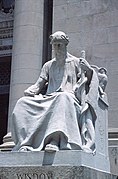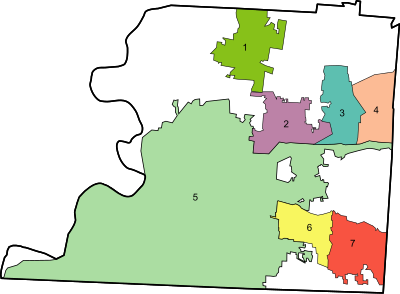
Memphis is a city in the U.S. state of Tennessee. It is the seat of Shelby County, in the southwesternmost part of the state, and is situated along the Mississippi River. With a population of 633,104 at the 2020 U.S. census, Memphis is the second-most populous city in Tennessee after Nashville.

Tipton County is a county located on the western end of the U.S. state of Tennessee, in the Mississippi Delta region. As of the 2020 census, the population was 60,970. Its county seat is Covington. Tipton County, founded in 1823, is part of the Memphis, TN-MS-AR Metropolitan Statistical Area.

Sullivan County is a county located in the U.S. state of Tennessee on its northeast border. As of the 2020 census, the population was 158,163. Its county seat is Blountville.
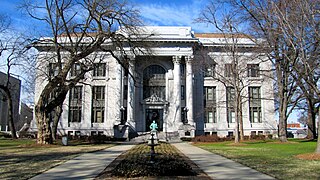
Hamilton County is a county located in the U.S. state of Tennessee. It is located in the southern part of East Tennessee on the border with Georgia. As of the 2020 census, the population was 366,207, making it the fourth-most populous county in Tennessee. Its county seat is Chattanooga, located along the Tennessee River. The county was named for Alexander Hamilton, the first secretary of the treasury.

Fayette County is a county located in the U.S. state of Tennessee. As of the 2020 census, the population was 41,990. Its county seat is Somerville. The county was named after the Marquis de la Fayette, French hero of the American Revolution. A part of the Memphis, TN-MS-AR Metropolitan Statistical Area, Fayette County is culturally alike to the Mississippi Delta and was a major area of cotton plantations dependent on slave labor in the nineteenth century.
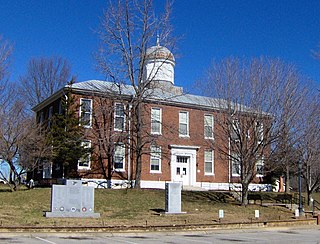
Dickson County is a county located in the U.S. state of Tennessee. As of the 2020 census, the population was 54,315. Its county seat is Charlotte. Dickson County is part of the Nashville-Davidson–Murfreesboro–Franklin, TN Metropolitan Statistical Area. Dickson County is home to Tennessee's oldest courthouse in continuous use, built in 1835. This is the second courthouse in Charlotte as the first one, a log building, was destroyed in the Tornado of 1833, which destroyed all but one building on the courthouse square.

Crittenden County is a county located in the U.S. state of Arkansas. As of the 2020 census, the population was 48,163. The county seat is Marion, and the largest city is West Memphis.

Oakland is a town in Fayette County, Tennessee, United States. In 2020 the population of the town was 8,936, a gain of 417.8% since 2000, Reasons for this population boom, are the cities/counties low taxes, its low crime rate, and the 4 lane expansion of U.S. Highway 64 in the early 1990s. In 2023, the city was found to be one of the safest in Tennessee, rating 2nd.

Piperton is a city in Fayette County, Tennessee, United States. The population was 2,263 at the 2020 census. In 2007 USA Today cited the National Motorist Association when it listed Piperton as one of the worst cities for speeding tickets across the USA.

Rossville is a town in Fayette County, Tennessee, United States. The population was 1,041 at the 2020 census, up from 664 at the 2010 census.

Bolivar is a city in and the county seat of Hardeman County, Tennessee, United States. The town was named for South American revolutionary leader Simón Bolívar. As of the 2010 census, the city population was 5,417.
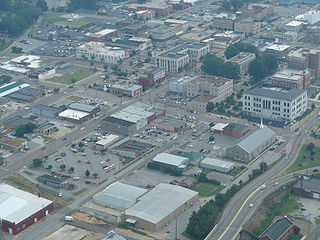
Jackson is a city in and the county seat of Madison County, Tennessee, United States. Located 70 miles (110 km) east of Memphis, it is a regional center of trade for West Tennessee. Its total population was 68,205 as of the 2020 United States census. Jackson is the primary city of the Jackson, Tennessee metropolitan area, which is included in the Jackson-Humboldt, Tennessee combined statistical area. Jackson is Madison County's largest city, and the second-largest city in West Tennessee after Memphis. It is home to the Tennessee Supreme Court's courthouse for West Tennessee, as Jackson was the major city in the west when the court was established in 1834.

Arlington is a town in Shelby County, Tennessee, United States. The population was 2,569 at the 2000 census, 11,517 at the 2010 census, and 14,549 at the 2020 Census. From 2010 until 2020 the town's population grew by 26.326%. It is one of the seven municipalities in Shelby County. The town lies wholly within the borders of Shelby County.

Bartlett is a city in Shelby County, Tennessee, United States. The population was 57,786 at the 2020 U.S. Census.

Germantown is a city in Shelby County, Tennessee, United States. The population was 41,333 at the 2020 census.

Millington is a city in Shelby County, Tennessee, United States, and is a part of the Memphis metropolitan area. As of the 2010 census, it had a population of 10,176. Millington was granted the title "Flag City Tennessee" by the Tennessee State Legislature. The Naval Support Activity Mid-South is located at the former Memphis Naval Air Station, whose function was changed in 1993 from a training base to an administrative one. There is also a general aviation airport that features the third longest runway in Tennessee.

Atoka is a local government area with a town charter in Tipton County, Tennessee, United States. In 1888, Atoka was a stop on the Newport News & Mississippi Valley Railroad. Today the City of New Orleans Amtrak passenger train makes its daily route between New Orleans and Chicago, through Atoka. The population was 10,008 at the 2020 census, making the Town of Atoka the largest municipality in Tipton County.

The Memphis–Clarksdale-Forrest City Combined Statistical Area, TN–MS–AR (CSA) is the commercial and cultural hub of the Mid-South or Ark-Miss-Tenn. The census-defined combined statistical area covers eleven counties in three states, Tennessee, Mississippi, and Arkansas. As of 2020 census, the Memphis metropolitan area had a population of 1,389,905 The Forrest City, Arkansas Micropolitan area was added to the Memphis area in 2012 to form the Memphis–Forrest City Combined Statistical area. In 2023 the Clarksdale, Mississippi Micropolitan area was also added to form the new Memphis-Clarksdale-Forrest City Combined Statistical Area which as of 2023 had a population of roughly 1.4 million people according to census estimates.

Memphis-Shelby County Schools(MSCS), previously known as Shelby County Schools (SCS), is a public school district that serves the city of Memphis, Tennessee, United States, as well as most of the unincorporated areas of Shelby County. MSCS is the 23rd largest school district in the United States and the largest in Tennessee.
Memphis, Tennessee is governed by a mayor and thirteen city council members. Since 1995, as a result of a legal challenge, all council members are elected from nine geographic districts. Seven are single-member districts and two have three representatives each.








